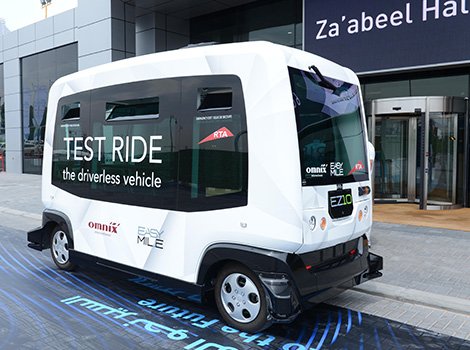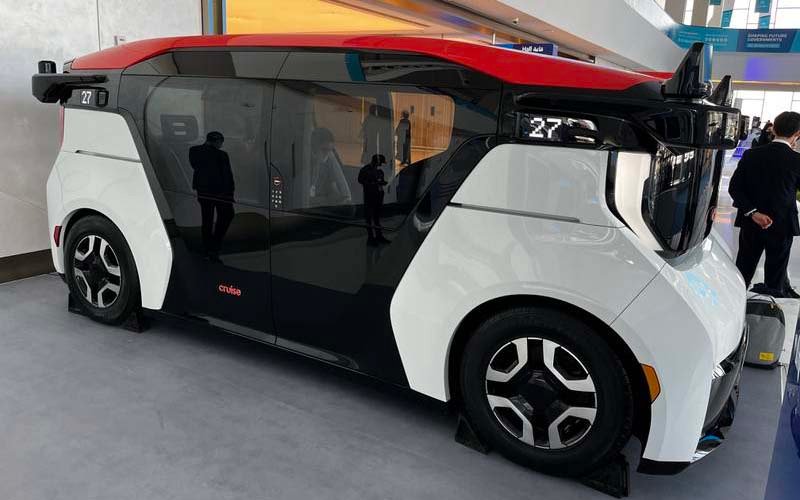Dubai has always aimed to be a global leader in futuristic transport solutions. Staying true to this ambition, the Roads and Transport Authority (RTA) of Dubai has recently taken a bold step by testing its autonomous vehicles in China. This major move is part of preparations for the upcoming $3 million transport challenge in 2025.
The Dubai RTA autonomous vehicles project is not just about showcasing innovation; it represents Dubai’s vision to transform urban mobility, reduce traffic congestion, and make roads safer and smarter. Let’s dive deep into what this move means, why China was chosen for the tests, and how it fits into Dubai’s long-term transport strategy.
Why Dubai is betting big on autonomous vehicles
Dubai has set an ambitious goal: by 2030, 25% of all trips in the city should be made using autonomous vehicles. This is part of the wider Dubai Smart Self-Driving Transport Strategy. The focus is on creating a sustainable, efficient, and technologically advanced transport system that supports economic growth and improves the quality of life.

The Dubai RTA autonomous vehicles project aligns perfectly with this vision. By adopting self-driving technology, Dubai aims to:
• Reduce road accidents, since most are caused by human error.
• Decrease traffic congestion by allowing vehicles to communicate and optimize flow.
• Lower carbon emissions by using electric autonomous vehicles.
• Enhance accessibility for elderly people and those with disabilities.
Why test in China?
You might wonder why Dubai chose China instead of conducting tests at home. There are several strong reasons for this strategic decision.
Advanced technology ecosystem
China is currently one of the world leaders in autonomous vehicle development. Cities like Beijing and Shanghai have built extensive test zones equipped with smart traffic signals, 5G infrastructure, and dedicated lanes for self-driving vehicles. This makes China an ideal testing ground for Dubai RTA autonomous vehicles.
Partnership opportunities
China is home to some of the biggest autonomous vehicle companies, such as Baidu, Pony.ai, and AutoX. By testing in China, Dubai can build partnerships, exchange knowledge, and adopt best practices from Chinese tech giants.
Regulatory flexibility
Chinese cities often offer more regulatory support for experimental technology. Dubai’s RTA can conduct tests more freely and at a larger scale, gathering valuable data before deploying vehicles in Dubai.
What is the $3 million transport challenge?
The $3 million transport challenge in 2025 is part of Dubai’s ongoing efforts to encourage innovation in mobility solutions. It is designed to attract global talent and companies to develop autonomous vehicle technology tailored for Dubai’s unique environment.
Goals of the challenge
Develop efficient self-driving systems that can handle Dubai’s harsh weather and high temperatures.
Integrate with Dubai’s existing transport network, including metro, buses, and marine transport.
Ensure safety and reliability, even during sandstorms and heavy rain.
Winners of this challenge will receive funding and support to deploy their solutions in Dubai. The data gathered from the tests in China will give the Dubai RTA autonomous vehicles an edge over global competitors.

How the tests are being conducted in China
The Dubai RTA is working with local Chinese partners to run a series of rigorous trials. Here’s an inside look at the testing process.
Urban and highway testing
Vehicles are driven autonomously through busy city streets and on highways to analyze how they respond to real-world traffic scenarios. Tests cover lane changing, pedestrian crossings, traffic light recognition, and emergency braking.
Weather adaptability tests
Dubai’s climate can be extreme. To prepare, vehicles are exposed to simulated harsh conditions, such as intense sunlight, rain, and fog, to ensure they perform reliably back home.
Data collection and AI training
Autonomous vehicles rely heavily on AI. Each test helps collect data on how the vehicle perceives its surroundings, reacts to sudden events, and improves its decision-making abilities. The more data they gather, the better and safer the vehicles become.
How Dubai will benefit from these tests
The knowledge and experience gained from testing in China will be vital for Dubai. Some key benefits include improved safety, faster deployment, and cost efficiency.
Improved safety
Dubai can use insights to develop safety protocols and standards specific to its urban landscape, minimizing risks during deployment.
Faster deployment
Testing in China allows Dubai to iron out technical issues before vehicles hit local roads. This means Dubai residents will see autonomous vehicles sooner than expected.
Cost efficiency
Running initial tests abroad reduces costs associated with accidents, repairs, and trial errors in Dubai. It also helps avoid public backlash against early failures.
Public opinion and future challenges
While the government and tech enthusiasts are excited, not everyone is convinced. Some Dubai residents worry about safety and the reliability of self-driving cars. Concerns include technology failures, cybersecurity risks, and job losses.
Dubai RTA has addressed these concerns by ensuring all autonomous vehicles undergo strict safety assessments and using advanced cybersecurity protocols. Moreover, the shift is expected to create new jobs in tech, maintenance, and operations, offsetting potential job losses.
Global context: How Dubai compares
Dubai isn’t alone in its race toward autonomous transport. Other cities and countries are also heavily investing in this sector.
United States
Companies like Waymo and Tesla are leading the self-driving car movement, with tests in cities like Phoenix and San Francisco.
Europe
Countries like Germany and the UK have launched pilot programs and set frameworks for autonomous vehicles on public roads.
China
China remains the biggest testing ground and market for autonomous vehicles, with significant support from both government and private sectors.
However, what sets Dubai apart is its clear government-driven vision and willingness to invest heavily in infrastructure and innovation.

What’s next after the China tests?
After completing tests in China, Dubai RTA plans to bring vehicles back for further trials in Dubai to evaluate how they perform on local roads under real weather conditions.
The next step will be integrating vehicles into the existing public transport system. Autonomous shuttles and taxis will complement metro and bus services.
Dubai will also launch public awareness campaigns to educate residents on how to interact with and trust autonomous vehicles.
A glimpse into Dubai’s future transport landscape
Imagine a Dubai where you summon a driverless taxi that arrives within minutes. Roads are safer and traffic jams are rare. Elderly and disabled residents enjoy more freedom to move independently. Carbon emissions are reduced, making the air cleaner.
This is the vision behind the Dubai RTA autonomous vehicles initiative. It isn’t just about technology; it’s about transforming how people live, work, and interact with their city.
Conclusion
The Dubai RTA autonomous vehicles tested in China mark a bold and exciting chapter in Dubai’s journey towards becoming a leader in smart mobility. The $3 million transport challenge in 2025 serves as a global stage where Dubai can showcase its ambition, innovation, and commitment to a smarter, safer, and greener future.
By choosing China for rigorous trials, Dubai is setting itself up for success while learning from the best in the field. As the world watches, Dubai is not just keeping pace with the global autonomous vehicle revolution, it is striving to lead it.
The next few years will be crucial. With public support, strong leadership, and advanced technology, Dubai is poised to transform the idea of transportation forever. Keep an eye on the roads — soon, they might be filled with sleek, driverless vehicles that once seemed like a dream but are now becoming reality.
Do follow UAE Stories on Instagram
Read More: UAE Construction Equipment Market on a Powerful Growth Streak













